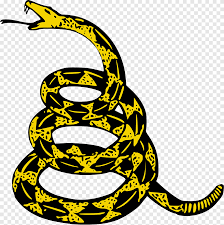Gadsden flag Colors Code hex, png svg
The Confederate flag, often referred to as the “rebel flag” or the “Southern Cross,” has a complex history and symbolism. Its design and the colors used have specific meanings, though interpretations can vary.
History
The flag most commonly associated with the Confederacy is the battle flag of the Army of Northern Virginia. It was designed by William Porcher Miles and adopted in 1861. This flag should not be confused with the “Stars and Bars,” the first official national flag of the Confederacy, which had a different design.
- First Confederate National Flag (“Stars and Bars”):
- Adopted in March 1861.
- Featured three horizontal stripes (red, white, red) with a blue canton containing a circle of white stars representing the Confederate states.
- Second Confederate National Flag (“Stainless Banner”):
- Adopted in May 1863.
- Included the battle flag as a canton on a white field.
- Third Confederate National Flag:
- Adopted in March 1865.
- Similar to the “Stainless Banner” but with a vertical red stripe on the right edge.
The most recognized flag today is the battle flag, often mistaken for the national flag.
Design and Colors
- Blue: The blue St. Andrew’s Cross represents the cross of Saint Andrew, the patron saint of Scotland, reflecting the Scottish heritage of many Southern settlers.
- Stars: The white stars represent the eleven states that seceded from the Union, plus Missouri and Kentucky, which had Confederate governments in exile.
- Red: The red field symbolizes the bloodshed in the fight for independence from the Union.
- White: The white border (in some variations) represents purity and the justness of the Confederate cause as perceived by its supporters.
Symbolism
The flag’s meaning has evolved and is often seen differently depending on the perspective:
- Historical Symbol: For some, it represents Southern heritage and history, including the valor of Confederate soldiers during the Civil War.
- Racial Controversy: For many, it is a symbol of racism, slavery, and segregation due to its association with the Confederacy, which fought to maintain the institution of slavery.
- Modern Usage: In contemporary times, the flag is often associated with white supremacist groups and has been a point of contention in public spaces and discourse.
Understanding the flag’s history and the contentious symbolism it holds today is crucial for discussions about its display and use.
Guess the Flags Quiz
Sharing is caring 🤗

National Symbols 👇
- 🏁 National Flags
- 🦁 National Animals
- 🐦 National Birds
- 🌻 National Flowers
- 🌴 National Trees
- 🥭 National Fruits
- 🍹 National Drinks
- 👴 National Founders
- ☘️ National Emblems
- 🍲 National Dishes
- 🏛️ National Monuments
- ✍️ National Poets
- 🕌 National Mausoleums
- 🎺 National Instruments
- 🦸 National Heroes
- 📆 National Days

